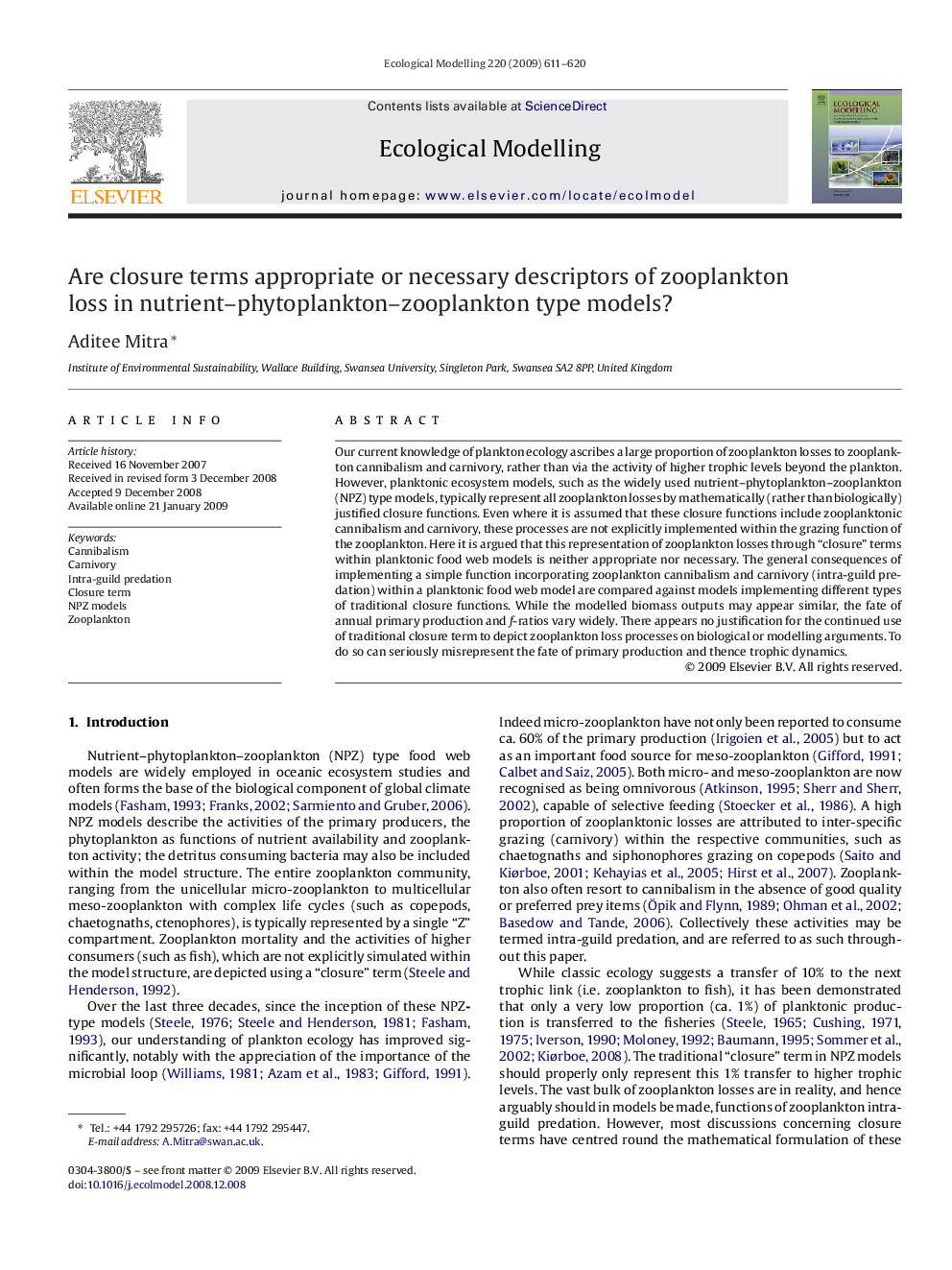| Article ID | Journal | Published Year | Pages | File Type |
|---|---|---|---|---|
| 4378190 | Ecological Modelling | 2009 | 10 Pages |
Our current knowledge of plankton ecology ascribes a large proportion of zooplankton losses to zooplankton cannibalism and carnivory, rather than via the activity of higher trophic levels beyond the plankton. However, planktonic ecosystem models, such as the widely used nutrient–phytoplankton–zooplankton (NPZ) type models, typically represent all zooplankton losses by mathematically (rather than biologically) justified closure functions. Even where it is assumed that these closure functions include zooplanktonic cannibalism and carnivory, these processes are not explicitly implemented within the grazing function of the zooplankton. Here it is argued that this representation of zooplankton losses through “closure” terms within planktonic food web models is neither appropriate nor necessary. The general consequences of implementing a simple function incorporating zooplankton cannibalism and carnivory (intra-guild predation) within a planktonic food web model are compared against models implementing different types of traditional closure functions. While the modelled biomass outputs may appear similar, the fate of annual primary production and f-ratios vary widely. There appears no justification for the continued use of traditional closure term to depict zooplankton loss processes on biological or modelling arguments. To do so can seriously misrepresent the fate of primary production and thence trophic dynamics.
